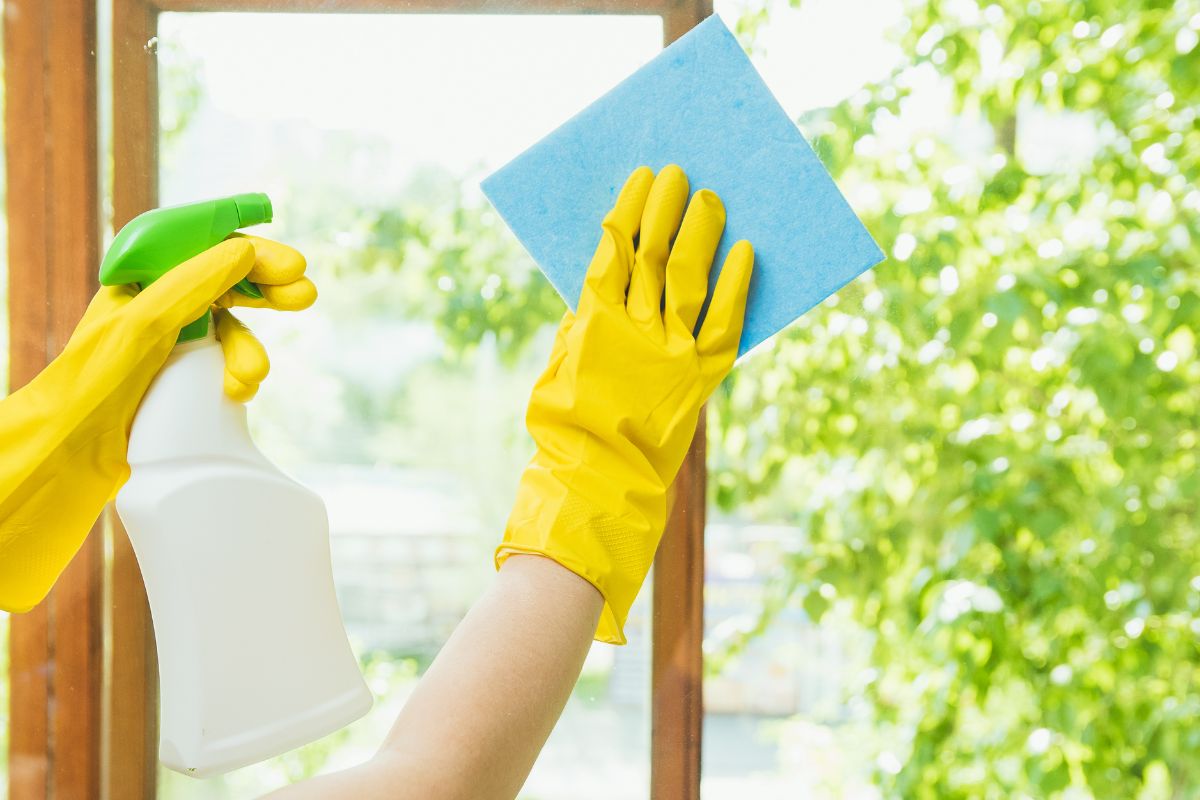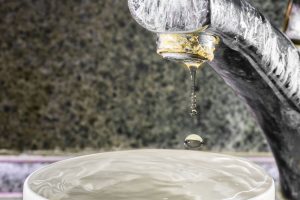For many years, conventional cleaning products with harsh chemicals have been the standard in homes all around the country. Nevertheless, studies reveal that several often-found components in commercial cleansers, including ammonia, bleach, and artificial perfumes, can have negative effects on both the environment and human health. Traditional cleaning chemicals include volatile organic compounds (VOCs), which have been connected to headaches, respiratory discomfort, and other health problems.
When discharged into the atmosphere, these VOCs can also aid in the development of smog and ground-level ozone. Furthermore, traditional cleaning products’ production and packaging frequently have a significant carbon footprint. Growing numbers of people are looking for environmentally responsible ways to clean their houses as they grow more conscious of the effects of their purchases.
For householders who want to lessen their environmental impact, green cleaning has many advantages, from water conservation to improved indoor air quality. By removing dangerous chemicals and pollutants from houses, eco-friendly cleaning can improve the indoor air quality for occupants. Using green techniques also contributes to long-term resource conservation, such as energy and water conservation.
The market for greener cleaning products is expanding, and with it, the availability and cost of these solutions. Homeowners can make minor but meaningful changes to their cleaning habits to make their routines more environmentally friendly and softer for their families. The green cleaning movement provides doable strategies for people to lessen their environmental effects and create healthier havens in their homes.
The Issues with Traditional Cleaning Methods
When released into the air, the chemicals chlorine, ammonia, and artificial scents found in many traditional cleaners can deteriorate the quality of indoor air. These volatile organic compounds (VOCs) have been linked to headaches, nausea, exhaustion, and irritation of the eyes, nose, and throat. Long-term VOC exposure may be considerably more harmful to one’s health.
Certain conventional cleansers contain glycol ethers based on ethylene, which the EPA has classified as dangerous air pollutants that can harm the neurological, reproductive, and hematologic systems. Particularly susceptible to the immediate and long-term consequences of volatile organic compounds (VOCs) from cleaning supplies are young people, the elderly, and people with respiratory disorders. While enough ventilation might be beneficial, the best way to remove volatile organic compounds (VOCs) is to practice green cleaning.
Many conventional cleaning products contain substances that have concerning environmental effects in addition to their negative effects on health. For example, mixing ammonia with chlorine bleach can result in the production of gasses that might harm the lungs. When discharged into rivers, chlorine bleaches can also create organochlorines, such as chloroform, which can be detrimental to aquatic environments. Many laundry detergents and all-purpose cleansers include alkylphenol ethoxylates, which are harmful to aquatic life.
Cleaners and laundry detergents include phosphates, which encourage the formation of algae and reduce the amount of oxygen in lakes and rivers. When washed down the drain, these and other contaminants disturb delicate aquatic habitats. We can prevent the release of various potentially dangerous chemicals into environmental waters by substituting environmentally friendly cleaners for harsh conventional ones.
It is essential to switch to safer and more environmentally friendly cleaning products in light of the negative effects of traditional cleaning supplies. Greener solutions lessen our dependency on potentially harmful substances like phosphates, ammonia, and chlorine. Cleaning solutions that are verified by credible eco-labels, including EPA Safer Choice and Green Seal, are guaranteed to be non-toxic and biodegradable.
There will be more eco-friendly solutions available on the market as more individuals demand change through their purchases. Selecting products with a lower environmental impact contributes to healthier households and ecosystems, even though no product is flawless.
Green Cleaning Services for Homes
Green Eco Friendly home cleaning services avail for routine household tasks and green cleaning products provide non-toxic, eco-friendly substitutes for conventional cleansers. The following are some of the easiest solutions for creating a sustainable, health-conscious cleaning supply set:
- Eco-friendly all-purpose cleaners with plant-based soaps, citrus extracts, and essential oils are natural components that work well. Seek certification from Safer Choice or Green Seal.
- Germs can be eradicated without the use of harsh chemicals by using non-toxic disinfectants that contain hydrogen peroxide and plant oils. One of nature’s most powerful natural disinfectants is thyme oil.
- Dish and laundry soaps that are eco-friendly degrade rapidly and use surfactants derived from plants rather than alkylphenol ethoxylates. Check the label for the term “readily biodegradable”.
Making the switch to eco-friendly cleaning supplies has several advantages.
- Air quality is improved and irritation is decreased by avoiding VOCs, artificial perfumes, and other harsh chemicals found in conventional cleaners.
- When cleaning chemicals decay, selecting plant-based components that biodegrade swiftly and safely contributes to the preservation of ecosystems and biodiversity.
- Un-like traditional cleaning products, natural alternatives don’t release poisonous fumes and are safe to consume if swallowed accidentally. Also kinder to sensitive skin.
Homemade Green Cleaning Recipes
Make your natural cleaning products with common pantry items to reduce your environmental impact even further. Here are some suggestions:
- Universal Cleaner: For a natural degreaser, combine one quart of warm water with four tablespoons of baking soda; alternatively, use a citrus vinegar spray.
- Cleaner: Mix well. In a spray bottle, combine 1/2 cup white vinegar, 1/4 cup hydrogen peroxide, and 20–25 drops of essential oils that are antibacterial, such as thyme or tea tree.
- Laundry: Combine equal parts borax, washing soda, and grated soap nuts into flakes or powder to create a non-toxic laundry booster.
Label bottles properly and do your homework on how to store and use them when creating your own DIY cleaners. These DIY concoctions can clean well without using harsh chemicals, even though they’re not as concentrated as store-bought treatments.
Eco-Friendly Cleaning Equipment
With the correct green tools, we can clean more efficiently and reduce waste. Practical choices consist of:
Reusable microfiber cloths: These lint-free cloths eliminate the need for cleaning sprays by cleaning with just water. robust and machine washable.
Scrub brushes made of bamboo or recycled plastic: These eco-friendly materials are effective at removing grease. To cut down on waste, look for brushes with interchangeable heads.
Washable/reusable mop pads: Opt for cotton or microfiber mop pads that can be washed instead of single-use paper towels.
Reusable cleaning tools reduce environmental impact and promote sustainability when paired with non-toxic cleaners. When opposed to disposables, high-quality green equipment also results in longer-term cost savings.
Some Advice for a Greener Cleaning Schedule
We can simply include eco-friendly cleaning techniques into our routines if we have the following strategies:
Preserve water by soaking pots or cleaning surfaces with baking soda paste before rinsing; do not use the tap while cleaning sinks and tiles.
To find cleansers that have been independently confirmed as sustainable, look for those bearing the Safer Choice or Green Seal badges.
- Refill spray bottles at environmentally friendly refill stations; wherever possible, choose concentrated and bulk sizes to minimize the waste from plastic packaging.
- Use less wasteful reusable microfiber cloths and scrub brushes in place of paper towels and synthetic sponges.
We may change our routine cleaning routines to be more environmentally friendly and kind to our indoor spaces by making a few small changes. When creating any new habit, consistency is essential.
Summary
Issues like indoor air pollution from conventional cleaners can be resolved by switching to plant-based, sustainable green cleaning methods. Studies reveal that using green cleaning removes bacteria efficiently without using harsh chemicals. Simple actions have a big impact: manufacture your cleansers, convert from throwaway to reusable items, and replace one conventional cleaner with an environmentally friendly alternative. Minor adjustments add up to a more environmentally friendly lifestyle that is good for the environment and human health. A revolution in green cleaning can be sparked by our combined efforts.











